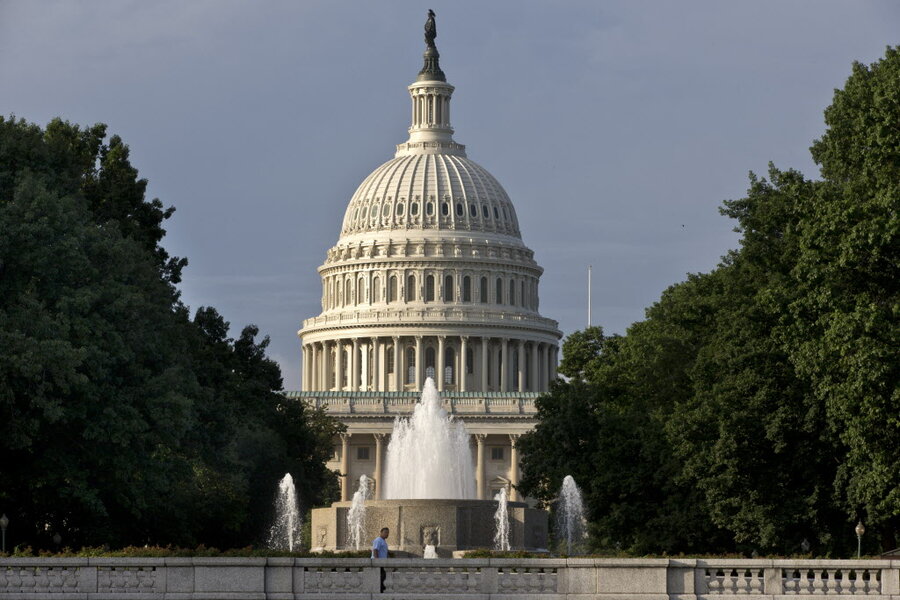How the Peoples Party prevailed in 2020
Third parties have rarely posed much of a threat to the dominant two parties in America. So how did the People’s Party win the U.S. presidency and a majority of both houses of Congress in 2020?
It started four years before, with the election of 2016.
As you remember, Donald Trump didn’t have enough delegates to become the Republican candidate, so the GOP convention that summer was “brokered” – which meant the Party establishment took control, and nominated the Speaker of the House, Paul Ryan.
Trump tried to incite riots but his “I deserve to be president because I’m the best person in the world!” speech incited universal scorn instead, and he slunk off the national stage (his last words, shouted as he got into his stretch limousine, were “Fu*ck you, America!”)
On the Democratic side, despite a large surge of votes for Bernie Sanders in the final months of the primaries, Hillary Clinton’s stable of wealthy donors and superdelegates put her over the top.
Both Republican and Democratic political establishments breathed palpable sighs of relief, and congratulated themselves on remaining in control of the nation’s politics.
They attributed Trump’s rise to his fanning of bigotry and xenophobia, and Sanders’s popularity to his fueling of left-wing extremism.
They conveniently ignored the deeper anger in both camps about the arbitrariness and unfairness of the economy, and about a political system rigged in favor of the rich and privileged.
And they shut their eyes to the anti-establishment fury that had welled up among independents, young people, poor and middle-class Democrats, and white working-class Republicans.
So they went back to doing what they had been doing before. Establishment Republicans reverted to their old blather about the virtues of the “free market,” and establishment Democrats returned to their perennial call for “incremental reform.”
And Wall Street, big corporations, and a handful of billionaires resumed pulling the strings of both parties to make sure regulatory agencies didn’t have enough staff to enforce rules, and to pass the Trans Pacific Partnership.
Establishment politicians also arranged to reduce taxes on big corporations and simultaneously increase federal subsidies to them, expand tax loopholes for the wealthy, and cut Social Security and Medicare to pay for it all. (“Sadly, we have no choice,” said the new President, who had staffed the White House and Treasury with Wall Streeters and corporate lobbyists, and filled boards and commissions with corporate executives).
Meanwhile, most Americans continued to lose ground.
Even before the recession of 2018, most families were earning less than they’d earned in 2000, adjusted for inflation. Businesses continued to shift most employees off their payrolls and into “on demand” contracts so workers had no idea what they’d be earning from week to week. And the ranks of the working poor continued to swell.
At the same time, CEO pay packages grew even larger, Wall Street bonus pools got fatter, and a record number of billionaires were becoming multi-billionaires.
Then, of course, came the recession, along with bank losses requiring another round of bailouts. The Treasury Secretary, a former managing director of Morgan Stanley, expressed shock and outrage, explaining the nation had no choice and vowing to “get tough” on the banks once the crisis was over.
Politics abhors a vacuum. In 2019, the People’s Party filled it.
Its platform called for getting big money out of politics, ending “crony capitalism,” abolishing corporate welfare, stopping the revolving door between government and the private sector, and busting up the big Wall Street banks and corporate monopolies.
The People’s Party also pledged to revoke the Trans Pacific Partnership, hike taxes on the rich to pay for a wage subsidy (a vastly expanded Earned Income Tax Credit) for everyone earning below the median, and raise taxes on corporations that outsource jobs abroad or pay their executives more than 100 times the pay of typical Americans.
Americans rallied to the cause. Millions who called themselves conservatives and Tea Partiers joined with millions who called themselves liberals and progressives against a political establishment that had shown itself incapable of hearing what they had been demanding for years.
The rest, as they say, is history.
This article first appeared at Robert Reich.






